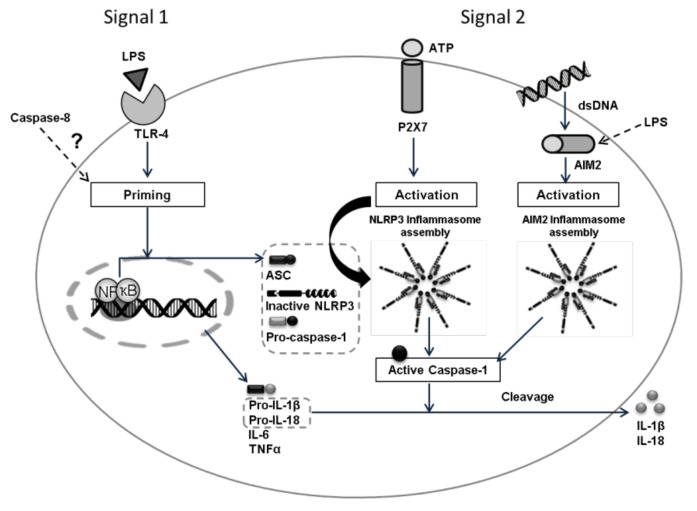Figure 1.
Activation of the inflammasome requires two signals: Signal 1 (priming) is triggered by the recognition of PAMPs/DAMPs (i.e., LPS) by PRRs (Pattern Recognition receptors), such as Toll-like receptors (TLR) and drives the nuclear translocation of NF-κB and the transcription of its target genes. For the activation, signal 2 induces the assembly of NLRP3 (i.e., ATP) or AIM2 (i.e., dsDNA), ASC, and Caspase-1 supracomplexes to form an active NLRP3 or AIM2 inflammasome, where active Caspase-1 processes pro-IL-1β/pro-IL-18 into IL-1β/IL-18 mature forms that will be secreted into the extracellular space [1]. The role of caspase-8 remains unclear, but it is thought that it has an important role regulating the inflammasome priming pathway [5].

